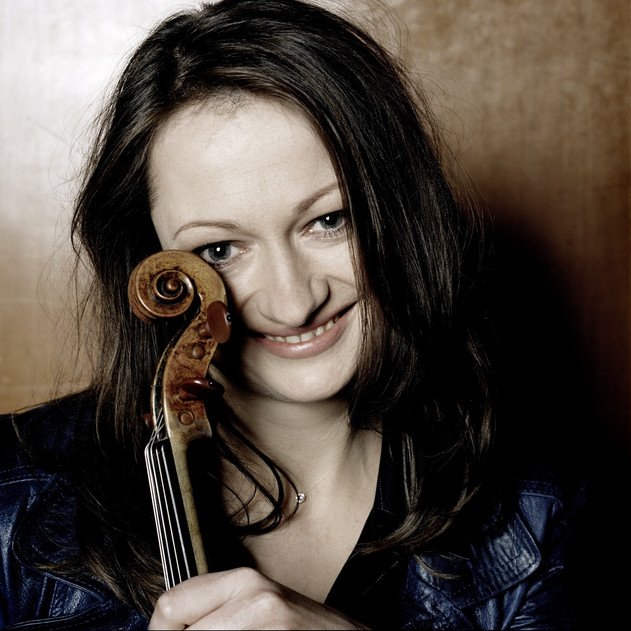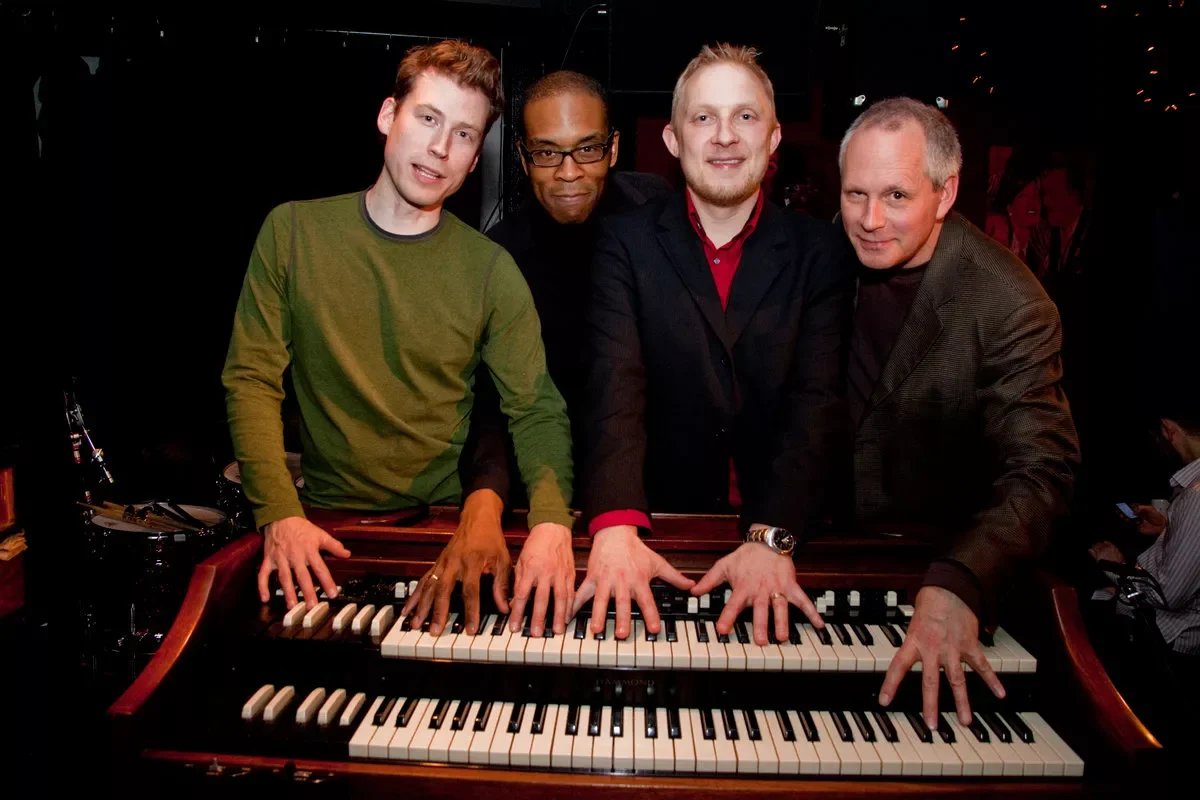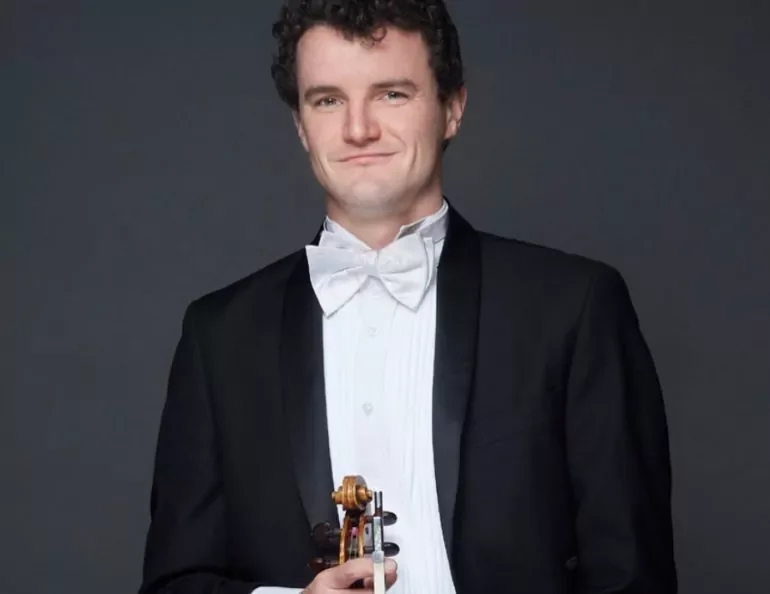The Fauré Quartett debuts in Vancouver on March 26 with some of its piano-led "greatest hits"
Though often adventurous, the German piano quartet arrives here with a more traditional program including Brahms’s Piano Quartet No. 1 in G minor
The members of Fauré Quartett. Photo by Tim Kloecker
Friends of Chamber Music presents Fauré Quartett at the Vancouver Playhouse on March 26 at 7:30 pm
AT HOME IN EUROPE, the Fauré Quartett is known for carefully assembled and provocatively imaginative programs—and for equally surprising forays into popular music, as demonstrated by the Beach Boys, Steely Dan, and Peter Gabriel covers collected on its Popsongs album, from 2009. But when the group makes its B.C. debut in a Friends of Chamber Music concert at the Vancouver Playhouse on March 26, none of these outré excursions will be heard, except perhaps in the encore portion of the evening. Instead, local listeners can expect a “greatest hits” approach to the piano-quartet repertoire, incorporating the sole surviving example of Gustav Mahler’s youthful venture into chamber music, a typically elegant score from the 19th-century French master Gabriel Fauré, and a demanding work from his German contemporary Johannes Brahms.
“We thought, as we’d never been to Vancouver before, that we’d just pick three of the absolute classics,” explains violinist Erika Geldsetzer, in a Zoom interview from her Berlin home. “So this is what the program’s about. When we come back to a place more often, I think we might play themed concerts of outrageous pieces and stuff like that—but we don’t want to scare people in Vancouver right away!”
The effusive Geldsetzer is not shy to flag Brahms’s Piano Quartet No. 1 in G minor as the likely highlight, in part because it so perfectly exemplifies the difference between a piano quartet and the more familiar string quartet configuration. Both instrumental combinations, she says, require all four members to be highly attuned to their colleagues—“That goes for any kind of chamber music,” she notes—but an extra level of care has to go into creating a satisfactory sonic blend whenever a piano is involved.
Erika Geldsetzer
“I used to have a string quartet as well, for more than 10 years at the same time as the piano quartet, so I got to know the different ways of working together very well on both sides,” the violinist explains. “If if you try to find a unified sound with only strings, it’s on one hand easier, because you are all string players. On the other hand, it’s more difficult. You know, the piano in the quartet is always the fixed figure. You have to take the piano’s intonation and work with it. And a string quartet, for example, they have to build the intonation with their overtones. Not only do they have to play in tune, but if all of them use different types of density in the bow, for example, then it sounds out of tune even if they are playing in tune. So it’s a different kind of working for a sound.
“In the piano quartet, on the other hand, we have this stranger of a piano in the midst of us strings, so it’s a completely different way of playing,” she continues. “We have to kind of blend into the overtones of the piano rather than amongst ourselves, because when we play in tune amongst ourselves like a string quartet we do not fit into the piano, neither in sound nor in intonation.”
The payoff, at least in terms of the Piano Quartet No. 1 in G minor, is that the five voices of the piano quartet achieve a near-orchestral density of sound, an effect that Brahms puts to good use. “You know that [Arnold] Schoenberg made a version for orchestra?” Geldseltzer points out. “He said that for once, he wanted to hear everything, that’s why he put it into orchestral form—which I didn’t understand at all, because usually things get lost in the orchestra. But he saw this quality as well, and that is one of the things that we try to bring out very much, this orchestral sound. It’s not this kind of dainty, chamber-music thing, and I also think that makes it easier for our pianist. Otherwise he always has to play mezzo forte, but in this piece he can go for it for real.”
An orchestral quality can also be heard in Mahler’s Piano Quartet in A minor. Even though it was written when the young composer was only 16, a decade before he began work on his Symphony No. 1 in D major, it shows a preternaturally mature understanding of pacing and density—and we’re lucky that it survives. Mahler was ruthless in destroying his juvenilia, and this one lives on, if only in fragmentary form, because it’s part of a larger piano-quartet score that he’d sent in to a competition in Russia. The surviving manuscript turned up in 1973, Geldseltzer says, and it’s both a beautiful premonition of Mahler’s orchestral works, and a hint of the great chamber-music composer he might have become had not larger forces caught and held his attention.
As for Fauré, Geldseltzer has a simple explanation for why his Piano Quartet No. 1 in C minor is on the program, and for why she, violist Sascha Frömbling, cellist Konstantin Heidrich, and pianist Dirk Mommertz took the French composer’s name for their German ensemble. “We realized that when we play Fauré, we fight less,” she says, laughing. “And also, when we founded ourselves in 1995, it was his anniversary, his 150th birthday, and he wrote such lovely things about music in general and chamber music in particular that we felt it appropriate.
“Also Fauré once said that, above anything, he was interested in the beauty of the world rather than its flaws,” she adds. “That could be interpreted as quite shallow, actually, but I know what he meant. He lived in all these lovely places, and apart from Paris he went to the countryside a lot, and we’ve been there and everything is utterly beautiful. I think he just tried to put all that into his music—and you cannot fight about beauty, can you?” ![]()














